Results 8,581 to 8,590 of 12091
Thread: Anandtech News
-
08-30-18, 03:30 PM #8581
Anandtech: Netgear's Orbi Voice Melds Mesh Wi-Fi with Smart Speakers
Netgear has been enjoying market success with their Orbi line of mesh Wi-Fi routers. Today, they are launching the Orbi Voice - a mesh Wi-Fi node compatible with existing Orbi kits, that also doubles up as a premium smart speaker with Alexa capabilities. The Orbi kits have been very successful in the market, and Netgear's aim is to keep adding features on top of the existing functionality to widen the target market for the product line. On one hand, we have subscription-based services like Disney Circle that allow for recurring revenue without the sale of new hardware. On the other, we have increased functionality that adds hardware features, like the integrated cable modem in the Cable Orbi launched a few months back.
The Orbi Voice falls under the second category. Smart speakers have made it big in the market over the last year or so, with consumers opting to largely ignore the privacy concerns associated with always-listening devices in favor of the convenience and novelty factor. The current smart speaker market is somewhat analogous to the Wi-Fi market in terms of market segmentation. On the Wi-Fi side, we have basic wireless routers, and Wi-Fi systems / mesh kits build on top of that. Vendors are then able to tag on advanced features and services on top of these Wi-Fi systems. On the smart speakers side, we have devices like the Amazon Echo Dot, which act more like voice assistants for conversational audio. Moving up the value chain, we have speakers offering basic music quality, while the Apple HomePod and the like fall under the premium audio category. Netgear's Orbi Voice aims to deliver premium audio along with all the value additions possible in a mesh Wi-Fi system.
With Netgear's core expertise being in the Wi-Fi area, the audio segment of the Orbi Voice is handled by Harman / Kardon. The companies have worked together to minimize the interference between the speakers and the wireless antennae.
The Orbi Voice with Built-In Alexa is certified by Amazon for use with US, UK, and Australian English, as well as German and French. The device comes with ring LEDs to convey the Wi-Fi and Alexa status, and also comes with the standard buttons for waking, speaker, and microphone muting. The device also supports various music services such as Spotify, Pandora, Amazon Music, Tune-In, Deezer, iHeart Radio etc.
Current Orbi owners interested in the Orbi Voice can purchase the Orbi Voice satellite (the AC2200 RBS40V, $300) which can seamlessly plug into their existing Orbi network. The Orbi Voice kit (RBK50V, $430) is an AC3000 system with the higher-end Orbi master (non-speaker variety) and the Orbi Voice satellite bundled together. The products will be available for purchase in September 2018.
The wireless router is an indispensable part of the modern household. As the number of connected devices in the home increases, it makes sense to integrate more of their functionality into the wireless router itself. In fact, many vendors are trying to move the home automation / smart home hub into the router, but, the growth in that market has been a bit slow. On the other hand, smart speakers have taken the market by storm and are enjoying unexpected success. The Orbi Voice launch shows that Netgear has been able to respond quickly to take advantage of this recent trend. It also helps keep their Orbi juggernaut rolling.
Gallery: Netgear's Orbi Voice Melds Mesh Wi-Fi with Smart Speakers



More...
-
08-30-18, 05:04 PM #8582
Anandtech: Netgear XR700 Router Brings 802.11ad and 10G to the Nighthawk Pro Gaming F
At the 2018 CES, Netgear had introduced the Nighthawk XR500 gaming router and the SX10 (GS810EMX) NBASE-T switch as part of the Nighthawk Pro family to server the needs of gamers. Today, they are launching the XR700 router that brings the capabilities of the router component to be a more powerful complement to the SX10 NBASE-T switch introduced earlier.
Similar to the XR500, the new XR700 router runs the DumaOS firmware developed by Netduma. DumaOS has been receiving frequent updates to enable compatibility of features such as geo-filtering with the latest games. The capabilities of DumaOS have been well-marketed by Netgear earlier. The main difference between the XR500 and the XR700 lies in the internal hardware.
While the XR500 was an AC2600 router with the Qualcomm-based Nighthaws X4S platform, the XR700 makes the step up to AD7200. This platform was last seen in the Nighthawk X10 launched in Q4 2016. It integrates an Annapurna Labs AL-314 SoC along with 802.11ac / 802.11ad radios from Qualcomm. In addition to the 802.11ad capabilities, the router also comes with a 10G SFP+ port. A direct-attach cable / SFP+ module (Netgear AXM765) to convert to 10GBASE-T is available separately. On the firmware side, we get the pre-installed Plex Media Server (similar to the Nighthawk X10).
The main differences between the Nighthawk X10 and the XR700 are:
- A different industrial design for the chassis, to better reflect the Nighthawk Pro gaming branding
- Replacement of the traditional firmware with the gaming-optimized DumaOS
- Abilitiy to use the 10G SFP+ port as a WAN port (the Nighthawk X10 restricted it LAN duties when it was launched).
- Value addition in the form of a 6 month unlimited Amazon Cloud backup
With the launch of the XR700, Netgear now has a powerful flagship in their Nighthawk Pro Gaming lineup. Combined with the S8000 and SX10 switches, Netgear is able to offer a complete solution for LAN gaming parties, while fulfilling the other requirements of the gaming crowd.
The Netgear XR700 has a MSRP of USD 500, and will be available for purchase in September 2018 for USD 500. The launch price of the Nighthawk X10 was also the same, but that product is available for $420 currently - a better price for those who need 802.11ad and 10G SFP+ without all the gaming features.
More...
-
08-31-18, 01:01 AM #8583
Anandtech: Huawei To Announce Kirin 980 Today at IFA
In the smartphone wars, the chip inside powering the devices is becoming ever more important. Raw performance plus accelerators are pushing the boundaries of what we used to think was possible. Huawei’s unique selling point is that it designs its own chips for its smartphones, based a lot on Arm’s reference cores. Today, Huawei will be announcing its next generation SoC to the world.
As proudly declared on stage at the Honor launch event yesterday, with Honor’s own upcoming Magic 2 smartphone having it inside, Honor’s CEO George Zhao proudly declared that Richard Yu, CEO of Huawei CBG, will be announcing the Kirin 980 today.
Huawei’s current flagship SoC is the Kirin 970, which sits inside the Mate 10, P20, P20 Pro, and Honor’s Play, Honor 10, and Honor View 10. All of Huawei’s chips are made by their internal design house, HiSilicon, and the Kirin 970 was announced last year at IFA, so it makes sense that this year we would see the next generation, the Kirin 980, around this time.
Huawei has a long tradition of being a primary Arm partner, often using its latest design options where possible to get the edge of the competition. The Kirin 980, as with the silicon before it, aims for the highest echelons of performance in order to set it apart from the competition. You can also expect the Kirin 980 to be promoted alongside Huawei’s other ‘features’, such as GPU Turbo.
As for the internals of the Kirin 980, we’ve had a pre-briefing and can’t tell you much until the actual presentation at the event due to NDAs. We went into a lot of detail with Huawei’s Benjamin Wang about the new chip design, and suffice to say that it follows in Huawei’s tradition to be a large number of ‘firsts’.
Huawei's keynote is today at 2pm CEST (8am ET), which will be live blogged if the data allows. Our embargo for the Kirin 980 information is half-an-hour later, at 2:30pm CEST. It's going to be a lot of fun. Stay tuned.HiSilicon High-End Kirin SoC Lineup SoC Kirin 980 Kirin 970 Kirin 960 CPU POWER* 4x A73 @ 2.36 GHz
4x A53 @ 1.84 GHz4x A73 @ 2.36GHz
4x A53 @ 1.84GHzGPU TURBO* ARM Mali-G72MP12
746 MHzARM Mali-G71MP8
1037MHzLPDDR4
MemorySOME* 4x 16-bit CH
LPDDR4 @ 1833 MHz
29.9GB/s4x 16-bit CH
LPDDR4 @ 1866MHz
29.9GB/sInterconnect YES ARM CCI ARM CCI-550 Storage I/F NO DOUBT* UFS 2.1 UFS 2.1 ISP/Camera SMILE* Dual 14-bit ISP Dual 14-bit ISP
(Improved)Encode/Decode FAST* 2160p60 Decode
2160p30 Encode2160p30 HEVC & H.264
Decode & Encode
2160p60 HEVC
DecodeIntegrated Modem IF YOU INSIST* Kirin 970 Integrated LTE
(Category 18/13)
DL = 1200 Mbps
5x20MHz CA, 256-QAM
UL = 150 Mbps
2x20MHz CA, 64-QAMKirin 960 Integrated LTE
(Category 12/13)
DL = 600Mbps
4x20MHz CA, 64-QAM
UL = 150Mbps
2x20MHz CA, 64-QAMSensor Hub AFFIRMATIVE* i7 i6 NPU 8-BALL SAYS YES* Yes No Mfc. Process ??? TSMC 10nm TSMC 16nm FFC *May be subject to change
Related Reading- HiSilicon Kirin 970 - Android SoC Power & Performance Overview
- HiSilicon Kirin 960: A Closer Look at Performance and Power
- HiSilicon Announces New Kirin 950 SoC
- The Qualcomm Snapdragon 845 Performance Preview
- The Qualcomm Snapdragon 835 Performance Preview
More...
-
08-31-18, 07:00 AM #8584
Anandtech: IFA 2018: Huawei Kirin 980 Keynote Live Blog
Our big keynote of the IFA 2018 show is from Huawei, with CEO Richard Yu set to take the stage and detail the newest Kirin 980 chipset for us. There's no livestream, so sit back and read as the information flows in.
More...
-
08-31-18, 08:06 AM #8585
Anandtech: Huawei To Launch the Mate 20 with Kirin 980 on October 16th
Just a small note to detail one of Huawei’s announcements today: alongside the Kirin 980 announcement, Richard Yu, Huawei’s CEO, stated that their next generation flagship device, the Mate 20, will be launched on October 16th. At the heart of the new device will be that Kirin 980, which Huawei boasts as having several world firsts.
As with previous years, Huawei has announced a new flagship SoC one month and followed it 6-8 weeks later with a device announcement. It has happened the last two years, and this is no different: the Kirin 970 from last year is in at least 7 devices from Honor and Huawei now, so we expect the new Kirin 980 to be just as prolific.
For full details of the chip, head on over to Andrei’s analysis, but the specification is as follows;
We will be there at the launch, and if the phone matches the impressive specifications of the chip, we will be in for an interesting story.HiSilicon High-End Kirin SoC Lineup SoC Kirin 980 Kirin 970 Kirin 960 CPU 2x A76 @ 2.60 GHz
2x A76 @ 1.92 GHz
@ 512KB L2's
4x A55 @ 1.80 GHz
@ 128KB L2's
4MB DSU L34x A73 @ 2.36 GHz
4x A53 @ 1.84 GHz
2MB L24x A73 @ 2.36GHz
4x A53 @ 1.84GHz
2MB L2GPU ARM Mali-G76MP10
@ 720 MHzARM Mali-G72MP12
@ 746 MHzARM Mali-G71MP8
@ 1037MHzLPDDR4
Memory4x 16-bit CH
LPDDR4X @ 2133MHz 34.1GB/s4x 16-bit CH
LPDDR4X @ 1833 MHz
29.9GB/s4x 16-bit CH
LPDDR4 @ 1866MHz
29.9GB/sStorage I/F UFS 2.1 UFS 2.1 UFS 2.1 ISP/Camera New Dual ISP
+46% speedDual 14-bit ISP Dual 14-bit ISP
(Improved)Encode/Decode 2160p60 Decode2160p?? Encode2160p60 Decode
2160p30 Encode1080p H.264
Decode & Encode
2160p30 HEVC
DecodeIntegrated Modem Kirin 980 Integrated LTE
(Category 21/18)
DL = 1400 Mbps
4x4 MIMO
3x20MHz CA, 256-QAM
(5CA no MIMO)
UL = 200 Mbps
2x2 MIMO
1x20MHz CA, 256-QAMKirin 970 Integrated LTE
(Category 18/13)
DL = 1200 Mbps
5x20MHz CA, 256-QAM
UL = 150 Mbps
2x20MHz CA, 64-QAMKirin 960 Integrated LTE
(Category 12/13)
DL = 600Mbps
4x20MHz CA, 64-QAM
UL = 150Mbps
2x20MHz CA, 64-QAMSensor Hub i8 i7 i6 NPU Dual @ >2x perf Yes No Mfc. Process TSMC 7nm TSMC 10nm TSMC 16nm FFC
More...
-
08-31-18, 08:06 AM #8586
Anandtech: HiSilicon Announces The Kirin 980: First A76, G76 on 7nm
This year at IFA, instead of suddenly finding the new silicon on the show floor, Huawei’s CEO Richard Yu announced this year’s new Kirin 980 during the company’s keynote speech. For readers who’ve been attentively following our articles over the last few months, today’s news should hopefully not come at too big of a surprise, as I’ve been heavily hinting at the timing of the first new 7nm Cortex A76 silicon designs coming later this year in commercial devices, with HiSilicon being the prime candidate for being the first vendor on the market with the their new generation SoC.
Huawei’s silicon design division HiSilicon has been a key strategic component for the company’s products, as it enables it to differentiate itself in a more drastic way than what we usually see from other vendors who simply rely on established open-market SoC vendors such as Qualcomm. This kind of strategy of course is a double-edged sword, as if you’re all-in with your in-house silicon, it also means that these designs must be executed properly, as otherwise you find yourself in an unfavourable competitive position.
The Kirin 950 was an impressive chip as it boasted the first Cortex A72 design on a then new TSMC 16FF manufacturing process – this paid off plenty for Huawei as the combination of new IP as a new manufacturing node resulted in a very competitive silicon which directly translated into favourable characteristics of the handsets in that it was used in.
The Kirin 960 and Kirin 970 on the other hand showcased the risky side of this strategy, and where things can go off-track – the Kirin 960 was a 16nm SoC released in a device generation where 10nm competitors such as the Snapdragon 835 and Exynos 8895 dominated. The Kirin 970 fared better when switching to a 10nm manufacturing node, but this time around HiSilicon wasn’t able to include the newest Arm CPU IP, relying on an A73 CPU while the Snapdragon 845 embraced the new A75. Furthermore the last two Kirin generations had showcased extremely uncompetitive GPU performance and efficiency figures – here HiSilicon is stuck and is at the whim of IP vendors’ ability to produce competitive designs against market leaders such as Qualcomm.
The reason as to why I reiterated what happened to the last few generations, is that this time around HiSilicon finds itself in a very favourable position where IP and manufacturing is aligned into what is essentially a best-case scenario for the new design. Arm’s new Cortex A76 and Mali G76 both promise great leaps in terms of performance and power efficiency, and TSMC is in mass production of its new 7nm manufacturing node.
Today we present the new Kirin 980, the first announced TSMC 7nm SoC as well as the first Cortex A76 and Mali G76 design:
The new Kirin 980 checks off all of the newest available IPs from Arm, finally employing a new DynamIQ CPU cluster configuration comprised of 4 Cortex A76's and 4 Cortex A55s.HiSilicon High-End Kirin SoC Lineup SoC Kirin 980 Kirin 970 Kirin 960 CPU 2x A76 @ 2.60 GHz
2x A76 @ 1.92 GHz
@ 512KB L2's
4x A55 @ 1.80 GHz
@ 128KB L2's
4MB DSU L34x A73 @ 2.36 GHz
4x A53 @ 1.84 GHz
2MB L24x A73 @ 2.36GHz
4x A53 @ 1.84GHz
2MB L2GPU ARM Mali-G76MP10
@ 720 MHzARM Mali-G72MP12
@ 746 MHzARM Mali-G71MP8
@ 1037MHzLPDDR4
Memory4x 16-bit CH
LPDDR4X @ 2133MHz 34.1GB/s4x 16-bit CH
LPDDR4X @ 1833 MHz
29.9GB/s4x 16-bit CH
LPDDR4 @ 1866MHz
29.9GB/sStorage I/F UFS 2.1 UFS 2.1 UFS 2.1 ISP/Camera New Dual ISP
+46% speedDual 14-bit ISP Dual 14-bit ISP
(Improved)Encode/Decode 2160p60 Decode2160p?? Encode2160p60 Decode
2160p30 Encode1080p H.264
Decode & Encode
2160p30 HEVC
DecodeIntegrated Modem Kirin 980 Integrated LTE
(Category 21/18)
DL = 1400 Mbps
4x4 MIMO
3x20MHz CA, 256-QAM
(5CA no MIMO)
UL = 200 Mbps
2x2 MIMO
1x20MHz CA, 256-QAMKirin 970 Integrated LTE
(Category 18/13)
DL = 1200 Mbps
5x20MHz CA, 256-QAM
UL = 150 Mbps
2x20MHz CA, 64-QAMKirin 960 Integrated LTE
(Category 12/13)
DL = 600Mbps
4x20MHz CA, 64-QAM
UL = 150Mbps
2x20MHz CA, 64-QAMSensor Hub i8 i7 i6 NPU Dual @ >2x perf Yes No Mfc. Process TSMC 7nm TSMC 10nm TSMC 16nm FFC
The biggest surprise to today’s announcement for me is to see that HiSilicon has made the step forward to fully take advantage of Arm’s new DSU cluster and its asynchronous CPU configuration, and actually implement the brand new Cortex A76 into two groups, each housed in their own clock and voltage plane.
The highest performance Cortex A76 pair runs at up to 2.6GHz. This is less than Arm’s originally announced 3GHz target for the CPU, however I had warned readers to expect more conservative clocks around the 2.5GHz figure, as the higher clock rates seemingly were meant for higher TDP form-factors. Nevertheless, the new CPU microarchitecture still brings with it substantial performance improvements, and thus will still perform very well at 2.6GHz, posting leading performance for this generation.
The surprise of seeing the second pair of Cortex A76 cores running at up to 1.92GHz is actually quite fantastic news for power efficiency. Here we see HiSilicon include what is essentially a “medium” efficiency group of CPUs. Because these two cores are running on a separate clock and voltage plane to the primary performance A76 pair, it means they can operate at different efficiency points, enabling more effective power savings in varied multi-threaded operation.
Previously, quad-core clusters were running on the same clock and voltages, and if there was a single high performance thread requiring a high performance state, it meant that other medium-performance threads were forced to take a power efficiency penalty by needlessly running at this less efficient performance state. By introducing a mid-tier, this effectively eliminates such kind of overhead which is commonly found in real-world applications.
I haven’t been able to confirm this with HiSilicon as of yet, but the reduced clock of this mid pair of A76 would also strongly point out to a possibly different physical implementation with a lower silicon sign-off frequency. This means that even though both pairs of A76’s are the same IP, this mid-pair are very likely to actually be more efficient when running at the same frequency.
Finally, we see four new Cortex A55 cores as the most power-efficient workhorses of the SoC who’ll be able to take the brunt of workloads, running at up to 1.8GHz. Here again, virtue of the mid-performance cluster, HiSilicon is likely able to implement a very power-efficiency focused physical implementation for the A55’s, resulting in clock speeds that in range with current generation A53 and A55 SoCs.
Cache wise, all the Cortex A76’s come with their recommended 512KB L2 cache configurations while the A55’s employ 128KB caches. As a reminder, in the new DynamIQ cluster configuration, the L2 caches for these designs are private to each CPU core. The L3 cache in the DSU has seen a full implementation at 4MB, double that of what we’ve seen in the Snapdragon 845.
I haven’t been able to confirm the frequency of the DSU in the Kirin 980, nor if it actually has a separate clock and voltage plane of its own, here it might be possible that it’s could be on the same plane with the A55’s. Again, that’s just speculation on my part, the other possibility is that we have 4 full clock and voltage planes for the whole CPU complex.
75% higher CPU performance, 58% better efficiency compared to Kirin 970
In terms of performance gains, HiSilicon promises 75% gains over the Kirin 970, which after a bit of math actually ends up basically exactly where I had projected the A76 to land, based on Arm’s own performance claims.
The following projection is of my own, and takes into account both Arm’s and HiSilicon’s matching performance claims:
As you may have noted, the power and efficiency estimates are also included. HiSilicon proclaims that the Kirin 980 is 58% more power efficient than the Kirin 970. We haven’t been able to clarify if this means that the perf/W is 58% better at the same performance of the 970, or if the Kirin 980 has a 58% better perf/W at both SoC’s respective peak performance states. The projection assumes the latter, and it actually again it matches up with Arm’s own claims about the Cortex A76.
I’m still very very sceptical about these numbers as they seem quite fantastic; yet to date I haven’t seen any contradictory information that would actually rebuke these estimates. For the time being, until we actually get our hands on the first Kirin 980 device, take the above power and efficiency estimate with a large grain of salt.
The move to a 3-tier CPU hierarchy also brings with itself complications in terms of scheduling. As we’ve seen this year, scheduling is very much a new critical component of modern SoCs as with the very high dynamic range of performance and power, using the most optimal solution is critical in extracting the best out of the silicon. Here HiSilicon promises a new “Flexible scheduling” mechanism. We unfortunately don’t have any more details on this, but it’s going to be a crucial component of the new Kirin 980.
New Mali G76MP10 – Actually 20 "rendering pipelines"
Moving on, the Kirin 980 is also the first SoC to employ Arm’s new generation Mali G76 GPU. The G76 greatly differs from past Midgard and Bifrost GPUs in that it vastly changes the block structure inside what you consider a “core”. Here the G76 essentially doubled up on texture units, render units, and doubles the width of the arithmetic pipelines. In effect, a G76 core is pretty much equivalent to two G72 cores.
What this means that while on paper the G76MP10 might at first glance looks smaller than the G72MP12 in the Kirin 970, yet it actually represents a 66% increase in the computational resources, not taking into account microarchitectural improvements of the new IP.
The Kirin 970’s GPU was clocked at up to 747MHz – however the power draw at this frequency was still too great for the SoC to handle, resulting in real-world workloads effectively running at much lower frequencies.
The Kirin 980 runs the new GPU at 720MHz and promises a 46% performance boost. We didn’t have any clarification of the workload here, but generally the industry standard is usually GFXBench Manhattan.
46% higher performance, and *178%* higher power efficiency
Now the real kicker of the new GPU, is that HiSilicon proclaims a massive 178% boost in power efficiency when compared to the Kirin 970. Putting these claims into our efficiency table and extrapolating the results:
The proclaimed performance boost would still be a tad too low catch up to the Snapdragon 845’s Adreno 630, at least in this workload. Here depending on how the Mali G76 scales, we might have different results based on different tests, showing a rebalancing of fillrate heavy workloads versus arithmetic/compute heavy workloads.GFXBench Manhattan 3.1 Offscreen Power Efficiency
(System Active Power)Mfc. Process FPS Avg. Power
(W)Perf/W
EfficiencyKirin 980 Projection Based on +% 7FF 55 ? 3.5 ? 16 fps/W ? Galaxy S9+ (Snapdragon 845) 10LPP 61.16 5.01 11.99 fps/W Galaxy S9 (Exynos 9810) 10LPP 46.04 4.08 11.28 fps/W Galaxy S8 (Snapdragon 835) 10LPE 38.90 3.79 10.26 fps/W LeEco Le Pro3 (Snapdragon 821) 14LPP 33.04 4.18 7.90 fps/W Galaxy S7 (Snapdragon 820) 14LPP 30.98 3.98 7.78 fps/W Huawei Mate 10 (Kirin 970) 10FF 37.66 6.33 5.94 fps/W Galaxy S8 (Exynos 8895) 10LPE 42.49 7.35 5.78 fps/W Galaxy S7 (Exynos 8890) 14LPP 29.41 5.95 4.94 fps/W Meizu PRO 5 (Exynos 7420) 14LPE 14.45 3.47 4.16 fps/W Nexus 6P (Snapdragon 810 v2.1) 20Soc 21.94 5.44 4.03 fps/W Huawei Mate 8 (Kirin 950) 16FF+ 10.37 2.75 3.77 fps/W Huawei Mate 9 (Kirin 960) 16FFC 32.49 8.63 3.77 fps/W Huawei P9 (Kirin 955) 16FF+ 10.59 2.98 3.55 fps/W
Where the Kirin 980 would showcase a large jump is in power consumption and efficiency. Again, HiSilicon’s marketing claims here end up matching what we had projected for the G76, based on Arm’s own figures. If this ends up as expected in measured devices, it would mean that the new Kirin would finally get back to sustainable power levels of that of the Kirin 950, shedding away the awful legacy of the first two Bifrost generation GPUs.
I’ve been banging the drums of the problem of sustainable performance a lot this year, and I do really hope the Kirin 980 ends up near the projections, because that would be a significant step forward for not only the SoC, but general consumer experience as well.
Faster memory controller
The new chipset sports an LPDDR4X memory controller, although it’s able to claim to be the industry’s first one to run at 2133MHz, resulting in a 13% increase in bandwidth. One of the weaknesses of the Kirin 970 was a memory controller that was quite power hungry at higher frequencies, here’s to hoping that the new design resolves these issues and we see better efficiency at high performance states.
Surprisingly, HiSilicon disclosed some memory latency and bandwidth figures: In the GeekBench 4 tests the Kirin 980 measures 138ns versus a quoted 176ns for the Snapdragon 845. This actually was a bit eye-brow raising as in context, the latency figure isn’t all that good: the Kirin 970 sported a similar 138ns latency as well, coming in the same ballpark of the Snapdragon 835. Yet all are worse than the Exynos 9810’s 78ns figure. Here I do hope the non-improvement doesn’t limit the peak performance of the A76 in the same way Qualcomm’s added latency of their new L4 system cache in the S845 hindered the A75 core’s performance.
Bandwidth figures are quoted at 23.1GB/s versus 19.2GB/s for the Snapdragon 845. I’ve been told GB4’s memory bandwidth test has issues scaling up after a certain point, so I’m not putting too much weight on these results for the time being.
New ISP with imaging features
The Kirin 980 sports a new ISP that increases is processing throughput capability by up to 46%, able support higher resolution camera streams. A first for HiSilicon is the introduction of a 10-bit pipeline for HDR capture, a feature also introduced in this year's competing SoCs, however only seldom used in practise due to colour management and displays lagging behind in terms of adoption.
The new ISP is able to now use “multi-pass noise reduction”, which sound much like the multi-frame noise reduction features introduced in the Snapdragon 845 this year, where noise reduction is not perform on a spatial pixel basis, but on a temporal inter-frame basis, resulting in sharper noise-free images without the side-effect of blurring. There’s also a new video encoding pipeline which promises “33% shorter delay” between captures. This last part was quite unclear in its meaning – the Kirin 970 lacked 4K60 encoding capabilities, and whether the Kirin supports it is something we still need to clarify with the company.
New “Dual-NPU” at 2x the throughput
The Kirin 980 continues improving its neural network inference acceleration IP, and introduces a new “Dual NPU”. In fact what this means is that the block essentially has been doubled up in the same way you would add a scaling unit to a GPU. The block still only handles one model kernel at a time, meaning in effect the speed of a single inference should be doubled, depending on NN model of course.
The new unit is said to be ~2.2x faster than the Kirin 970’s NPU, achieving up to 4500 inferences per minute, or 75 fps in their in-house test. They present figures for the Snapdragon 845 and Apple A11 as well, and as far as I can tell based on my own testing, these are very much accurate in terms of the observed performance.
Faster Category 21 Integrated Modem up to 1400Mbps
The new modem in the Kirin 980 elevates the capabilities of the predecessor – now it’s able to support up to UE Cat 21 download speeds of up to 1400Mpbs. This is achieved of up to 3x carrier aggregation in combination of 4x4 MIMO, all while support 2x2 MIMO and new 256-QAM in the upload link (Category 18), and achieving 200Mbps upload speeds.
[h=3]6.9bn transistors on
-
08-31-18, 09:40 AM #8587
Anandtech: Micron to Expand Its Fab 1 in Virginia, Build New R&D Center
Micron this week announced plans to expand production of DRAM and NAND memory at its fab in Manassas, Virginia. In total, Micron intends to invest $3 billion into the facility by 2030, and establish a global research development center for memory and storage solutions aimed at automotive, industrial, and networking applications.
Micron’s fab in Manassas, Virginia, is called Fab 1 and it was the first fab the company built in the early 1980s. Nowadays the fab processes 300 mm wafers and produces a variety of long-lifecycle high-reliability products for the aforementioned markets. Such memory devices are not a commodity, they usually do not have direct competitors and therefore deliver strong profitability. As demand for such products is increasing, Micron needs to boost their production capacity. In addition, the company intends to set up R&D operations in Manassas, Virginia.
The first step of the plan is to expand the clean room of Fab 1 to enable DRAM and NAND technology transitions at the plant, while also modestly increasing its output to satisfy demand for long-lifecycle products. The expansion will add less than 5% to Micron's global clean room space footprint, so it will barely have any effect on the total DRAM and NAND output of the company.
In addition, Micron will establish a global R&D center in Manassas that will develop next-gen memory and storage solutions for the automotive, industrial and networking applications. The R&D facility will employ approximately 100 engineers and will feature labs outfitted with test equipment. The adjacency to an actual production facility will likely be an advantage for the R&D centre.
Spending $3 billion on the R&D facility and expansion of the Fab 1 by 2030 will enable Micron to gradually upgrade the plant as well as buy new equipment for its research and development operations. The fab will not significantly increase its capacity over the coming years, but given the markets that it serves, it hardly needs to.
Related Reading:- Micron Starts Construction of Its Third NAND Fab in Singapore
- Intel and Micron To Dissolve 3D XPoint Partnership After 2019
- Intel And Micron To Discontinue Flash Memory Partnership
- Micron Discontinues Lexar Business, Plans to Focus on Higher-Margin Products
- Micron Hires New CEO: Sanjay Mehrotra, SanDisk Co-Founder And Former CEO
More...
-
08-31-18, 09:40 AM #8588
Anandtech: ASUS Details ZenBook Pro UX480 with ScreenPad, Whiskey Lake, & dGPU
ASUS at IFA formally introduced its 14-inch ZenBook Pro UX480 laptop featuring the company’s ScreenPad, a touchpad with a built-in display. The notebook was demonstrated back in early June at Computex, but ASUS never disclosed its specs nor an availability timeframe. As it appears, the mobile PC is powered by Intel’s latest Whiskey Lake-U processor accompanied by NVIDIA’s GeForce GTX dGPU. ASUS intends to start selling the product sometimes in late October.
The ZenBook Pro is a relatively new lineup in ASUS’ product range that is aimed at users demanding performance, portability, and style. Initially, ASUS introduced 15.6-inch versions of its ZenBook Pro laptops, but with the ZenBook Pro 14 UX480 it is adding 14-inch models into the family. Since the system is smaller, ASUS has to use components with a lower TDP, and possibly reduce the count of components in general. This however does not mean that the new system has to make compromises in terms of performance or key features. The ZenBook Pro 14 comes with Intel’s quad-core Core i5/i7 (Whiskey Lake-U) processor, NVIDIA’s discrete GeForce GTX 1050 GPU with Max-Q software, as well as ASUS’ 5.5-inch ScreenPad that can simplify usage of certain programs or even act like a second screen for applications that support it.
At least initially, ASUS will offer its ZenBook Pro 14 with a Full-HD multi-touch display that supports 100% of the sRGB color gamut, and is factory-calibrated to DeltaE accuracy of < 3.
As for DRAM and storage, the ZenBook Pro 14 will ship with either 8 or 16 GB DDR4-2400, as well as an SSD featuring 128GB to 1TB of capacity with a SATA or a PCIe interface. Interestingly, only the 1TB SSD variant inside the UX480 will use a PCIe 3.0 x4 interface, whereas the more popular 256 GB and 512 GB capacities will come with a PCIe 3.0 x2 or a SATA interface, which will therefore offer considerably lower performance. Furthermore, inexpensive versions of the ZenBook Pro 14 will be equipped with a hard drive and an Intel Optane Memory caching SSD.
The I/O capabilities of the ZenBook Pro 14 resemble those of higher-end ZenBook Pro 15 models, though the smaller PC lacks Thunderbolt 3. On the wireless connectivity side of things, we see Intel’s Wireless-AC 9560 CNVi solution featuring 802.11ac Wi-Fi (with up to 1.73 Gbps throughput over 160 MHz) and Bluetooth 5.0.
As for physical ports, the notebook is equipped with two USB 3.0 connectors (Type-A and Type-C), one USB 2.0 port, a HDMI display output, a microSD card reader, a TRRS audio jack, and a proprietary jack for charging. As for conferencing, the laptop has a VGA webcam with IR sensors for Windows Hello, Harman Kardon-badged stereo speakers with a ‘smart’ amplifier, and a microphone array.
When it comes to battery, the ZenBook Pro 14 is outfitted with a 70 Wh battery that enables 12.5 hours of autonomous operation and can fast charge from empty to 60% in 49 minutes.
Traditionally for ZenBooks, the ZenBook Pro 14 comes in an aluminum chassis with Deep Dive Blue finish with Rose Gold inlays. ASUS says that the chassis meets the MIL-STD 810G standard for reliability/durability, and can survive drops, vibrations, high/low temperatures, and so on.
The laptop features a 17.9-mm z-height and weighs 1.6 kilograms, which is not particularly thin or very light for a 14-inch laptop. In the meantime, since we are dealing with a notebook that has a discrete GPU, is able to accommodate a hard drive, is equipped with a ScreenPad (which adds the weight of the extra display module and its protective glass), and features a high-capacity battery, the weight and thickness are not particularly surprising.
As noted above, ASUS will start selling its ZenBook Pro 14 (UX480) starting from late October. Considering that there will be multiple configurations available, pricing of the new notebooks will vary greatly depending on exact configuration.
Related Reading:General Specifications of the ASUS ZenBook Pro 14 UX480 LCD Diagonal 14" Details 1920×1080 | 100% sRGB Multi-Touch 10-point multi-touch Screenpad Diagonal 5.5" Type Super IPS+ Resolution 1920×1080 CPU Options Core i7-8565U (4C/8T, 1.8 - 4.6 GHz, 8 MB, 15 W)
Core i5-8265U (4C/8T, 1.6 - 3.9 GHz, 6 MB, 15 W)Graphics Integrated HD Graphics 620 (24 EUs) Discrete NVIDIA GeForce GTX 1050 Max-Q
2 or 4 GB GDDR5 memory
GP107, 640 SPsRAM 8 or 16 GB DDR4-2400 Storage Options 128 or 256 GB SATA SSD
256 or 512 GB PCIe 3.0 x2 SSD
1 TB PCIe 3.0 x4 SSD
HDD with Intel Optane Memory caching SSDWireless Wi-Fi Intel Wireless-AC 9560 CRF
802.11ac (2x2) Wi-FiBluetooth Bluetooth 5.0 USB 2.0 1 × USB Type-A3.1 Gen 2 1 × USB Type-C
1× USB Type-AThunderbolt 2 × TB 3 (data, DP displays) Display Outputs 1 × HDMIGigabit Ethernet optional USB to LAN port dongle Card Reader MicroSD card reader Webcam Webcam with IR sensors for Windows Hello Fingerprint Sensor No Other I/O Microphone, stereo speakers, audio jack Battery 70 Wh, 12.5 hours battery life Dimensions Width 32.3 cm | 12.71 inch Depth 22.5 cm | 8.85 inch Thickness 1.79 cm | 0.7 inch Weight 1.6 kilograms | 3.52 lbs Price $? - ASUS ZenBook Pro 15 (UX580): A 5.5-inch Screen in the Touchpad
- ASUS Unveils Ultra-Thin ZenBook Pro 15 with Six-Core Core i9, GTX 1050, Calibrated 4K LCD
- ASUS ZenBook Pro 15 UX550GE Laptop with Core i7 & 4K LCD Is Now Available
More...
-
08-31-18, 10:56 AM #8589
Anandtech: AMD’s Ryzen Threadripper 2950X CPU Now Available
As pre-announced, AMD has begun selling its latest Ryzen Threadripper 2950X processor. The new CPU features 16 cores and is aimed at high-end desktops that can be overclocked for additional performance. Meanwhile, the new product costs exactly two times less than AMD’s flagship Ryzen Threadripper 2990WX, its sibling counter-part meant for extreme workstations.
The AMD Ryzen Threadripper 2950X processor relies on two eight-core Zen+ dies fabbed using GlobalFoundries’ 12LP process technology on a single piece of substrate. The CPU thus offers 16 cores featuring SMT technology and running at 3.5 – 4.4 GHz, featuring 32 MB of cache, a quad-channel DDR4-2933 memory subsystem, and 60 lanes of PCIe Gen 3.
With a TDP of 180 W, the Ryzen Threadripper 2950X is compatible with all AMD X399-based platforms featuring sTR4 sockets. Meanwhile, since these chips are designed to be overclocked, they can benefit from motherboards with high-quality VRMs and more robust cooling systems, as the TDP of overclocked CPUs can skyrocket well above their regular power envelope.AMD's High-Performance Desktop CPUs Cores/
ThreadsBase/
TurboL3 DRAM
1DPCPCIe TDP SRP Retail
PriceTR 2990WX 32/64 3.0/4.2 64 MB 4x2933 60 250 W $1799 $1799 TR 2970WX 24/48 3.0/4.2 $1299 - TR 2950X 16/32 3.5/4.4 32 MB 180 W $899 $899 TR 1950X 3.4/4.0 4x2667 $799 $720 TR 2920X 12/24 3.5/4.3 4x2933 $649 - TR 1920X 3.5/4.0 4x2667 $399 $449 TR 1900X 8/16 3.8/4.0 16 MB $299 $308 Ryzen 7 2700X 8/16 3.7/4.3 16 MB 2x2933 16 105 W $329 $319 Ryzen 7 1800X 8/16 3.6/4.0 16 MB 2x2667 95 W ? $244
AMD’s Ryzen Threadripper 2950X is now available from all leading retailers, including Amazon and Newegg for $899, which is actually cheaper than the price of AMD’s 16-core Ryzen Threadripper 1950X processor when it was launched about a year ago.
Buy AMD Ryzen Threadripper 2950X on Amazon.com
Buy AMD Ryzen Threadripper 2950X on Newegg
Related Reading:- The AMD Threadripper 2990WX 32-Core and 2950X 16-Core Review
- The AMD Threadripper 2 Teaser: Pre-Orders Start Today, Up to 32 Cores
- AMD Slashes Prices of First-Gen Ryzen Threadripper CPUs: Starting at $300
- Cooler Master Launches Wraith Ripper Cooler for Threadripper 2 CPUs
More...
-
08-31-18, 10:56 AM #8590
Anandtech: Sharp Announces 2nd Gen 8K UHD TVs at IFA
Sharp this week introduced its second-generation 8K ultra-high def TVs at IFA in Berlin. The new televisions use the company’s new panels as well as the latest processors that can upscale Full-HD and Ultra-HD 4K content to a 7680×4320 resolution.
The initial lineup of Sharp’s 2nd Gen Aquos 8K UHD TVs will include models featuring sizes of 60, 70, and 80 inches. The new televisions will be based on the company’s new image processor that doubles its compute throughput over the predecessor and can upscale 2K as well as 4K content to an 8K resolution with a 100/120 Hz refresh rate.
The largest Aquos 8T C80AX1 80-inch flagship TV will rely on the company’s new UV2A II LCD (presumably IPS/IGZO) panel featuring a 100/120 Hz refresh rate, an “ultra-high brightness”, a “new wide color gamut”, and “high speed response”. The company does not quantify its claims, but it is logical to expect the new TV to be better than the existing Sharp Aquos LC-70X500E UHD TV that features a 400 nits typical brightness, a 1000 nits peak brightness for HDR (HDR10, HLG are supported), and an 8 ms GtG response time. Meanwhile, it is unclear whether a wider color gamut means a better coverage for the BT.2020 color gamut by a new 10-bit panel, or usage of a 12-bit panel.
Sharp plans to commercially launch its Aquos AX1-series 8K UHD TVs in Asia in late 2018 with European release sometimes in Q1 2019. The manufacturer said nothing about availability of its 2nd Gen 8K UHD TVs in the U.S., but since it calls the new family a “global 8K lineup”, it is logical to assume that the televisions will eventually be available in North America as well.
Buy Dell UltraSharp UP3218K 32-inch 8K LCD on Amazon.com
Related Reading:- Sharp’s 8K UHD TV Available in Japan, Listed in Europe for €11,899
- CEATEC 2016: Sharp Showcases 27-inch 8K 120Hz IGZO Monitor with HDR, also 1000 PPI for VR
- Foxconn Takes Control of Sharp
Sources: Sharp, Technite-Video.de
More...
Thread Information
Users Browsing this Thread
There are currently 20 users browsing this thread. (0 members and 20 guests)




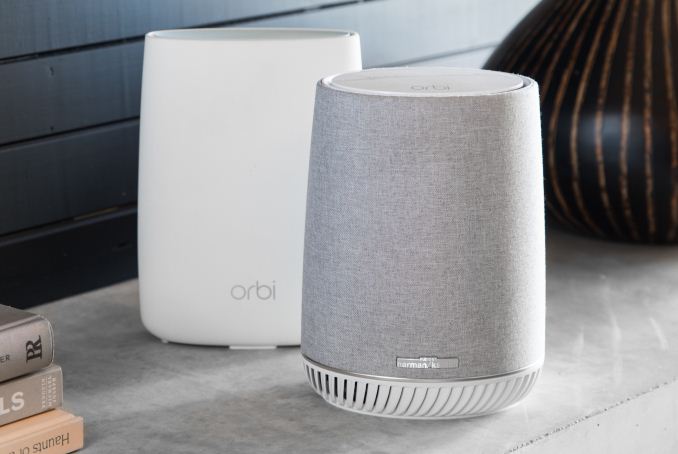
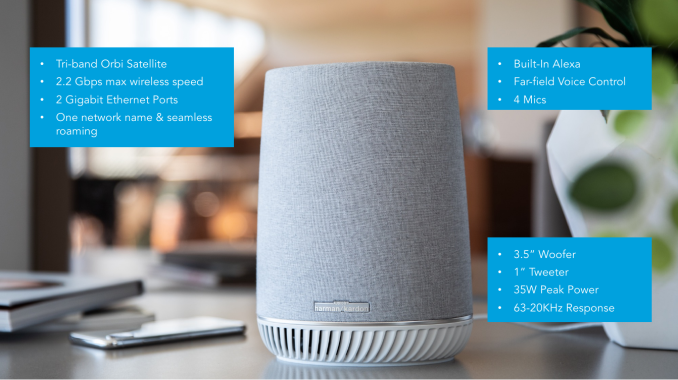

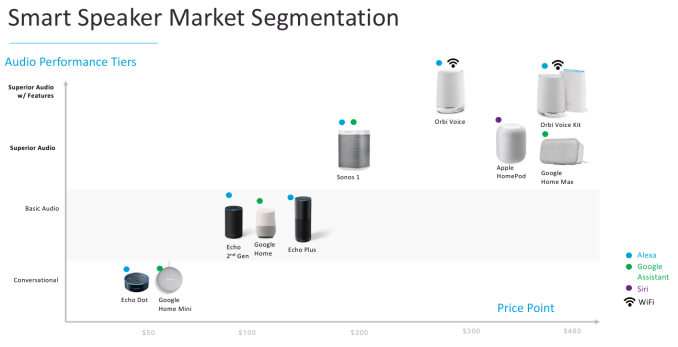

 Quote
Quote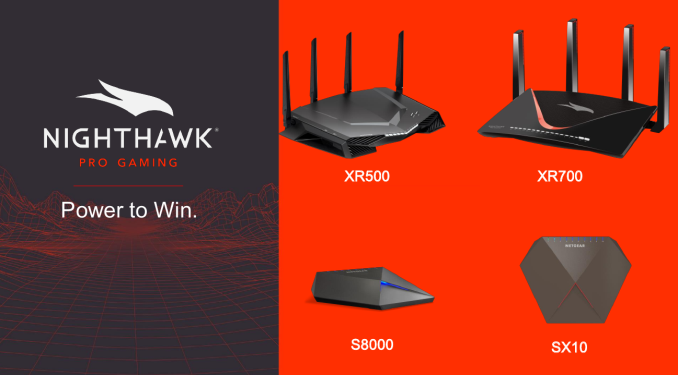
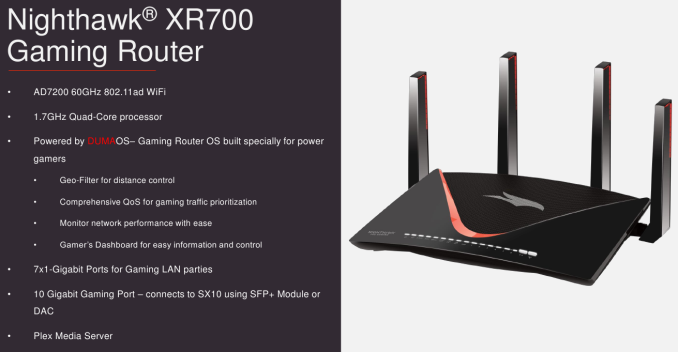
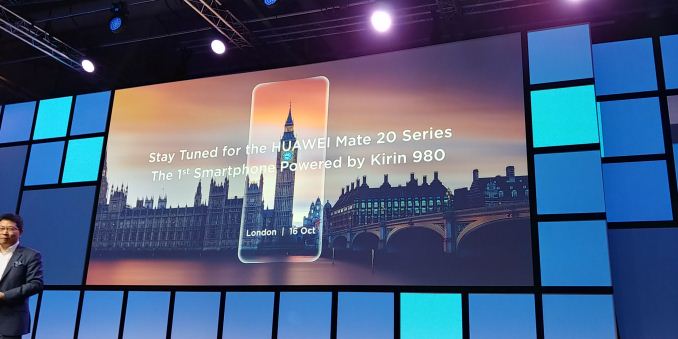
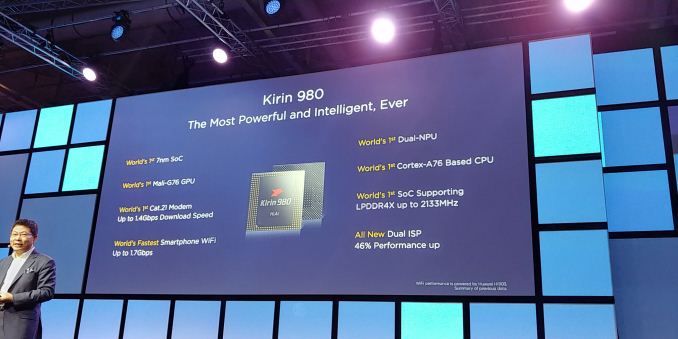
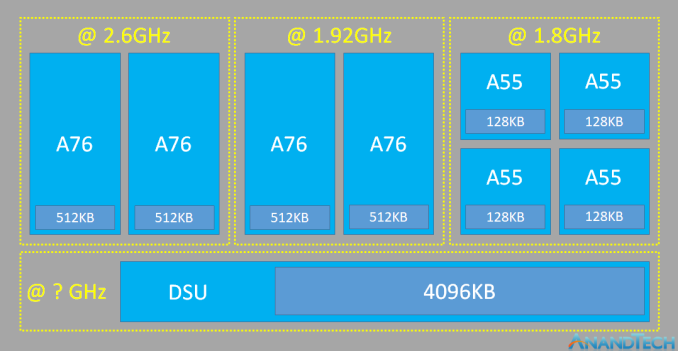

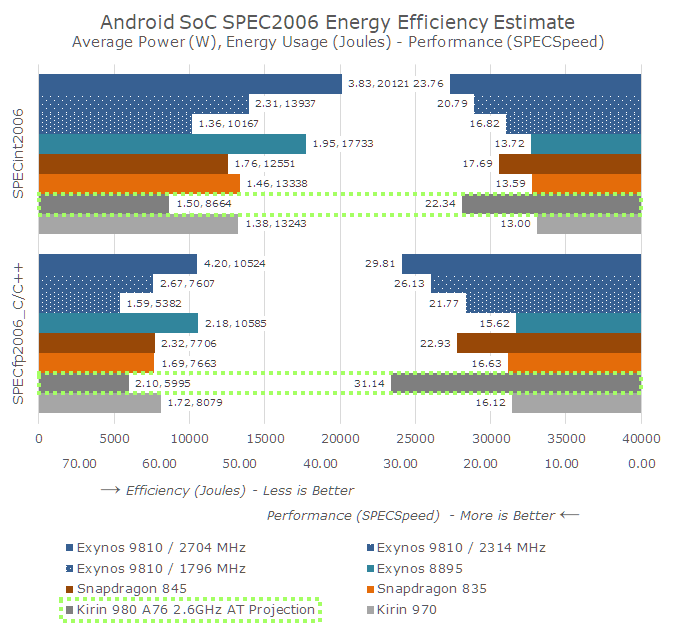
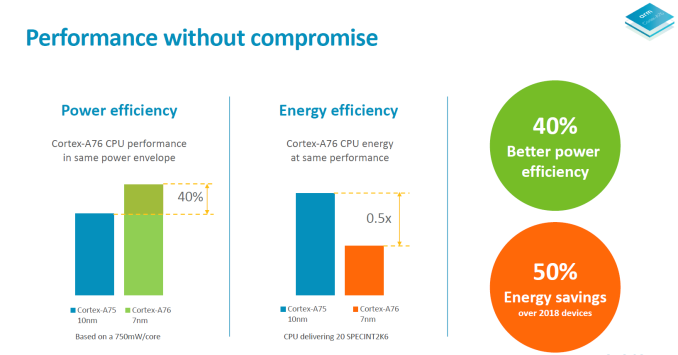
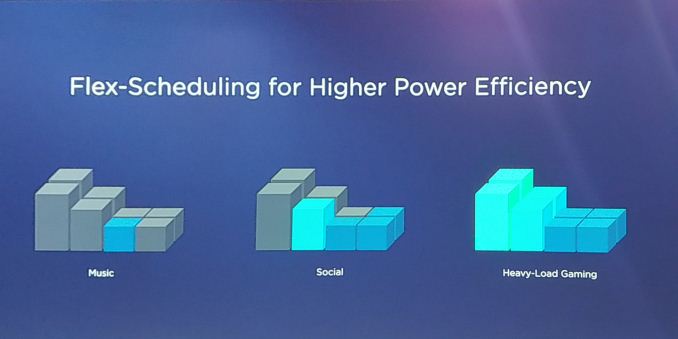
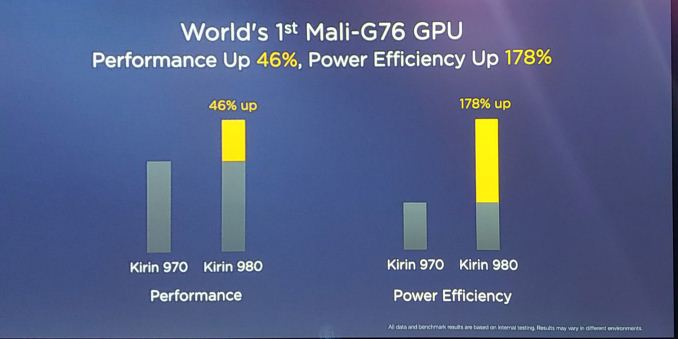
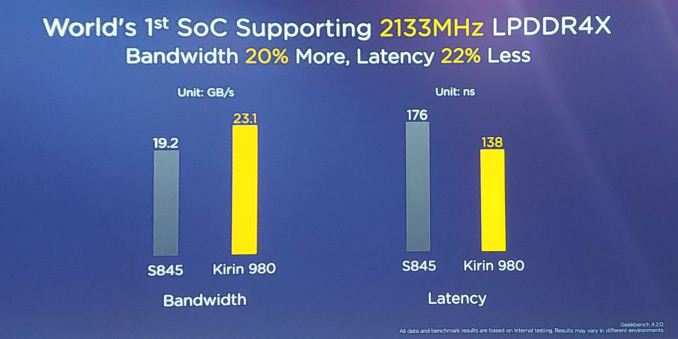
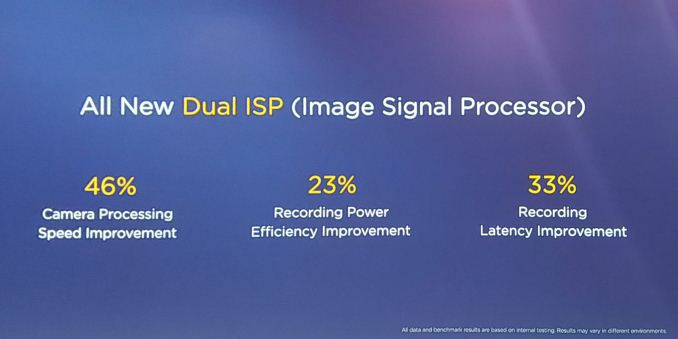
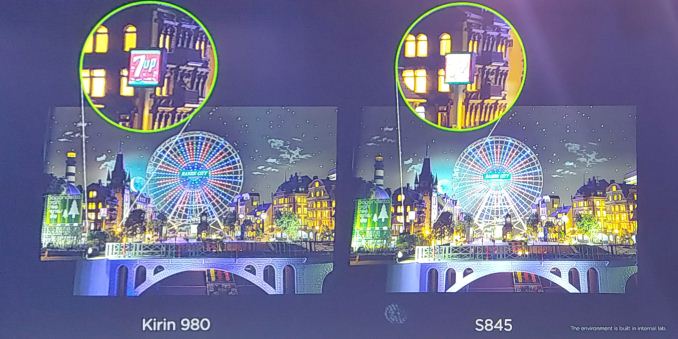

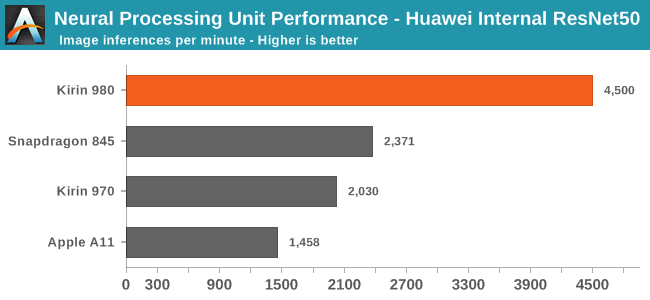

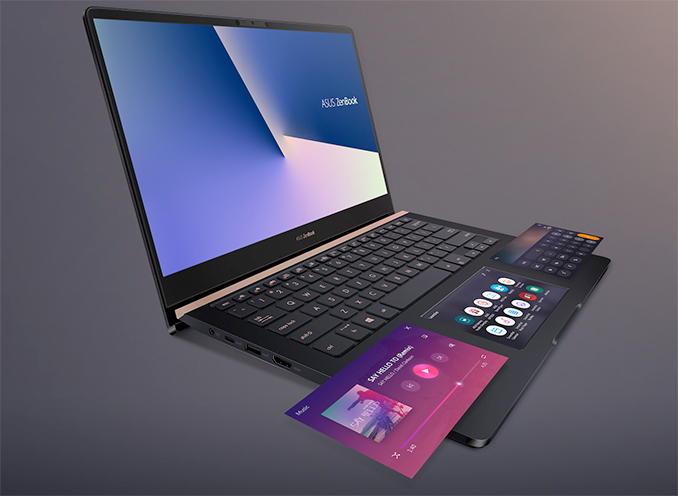
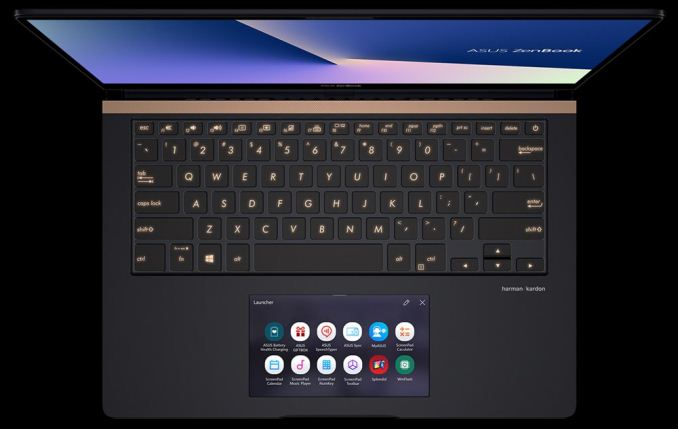

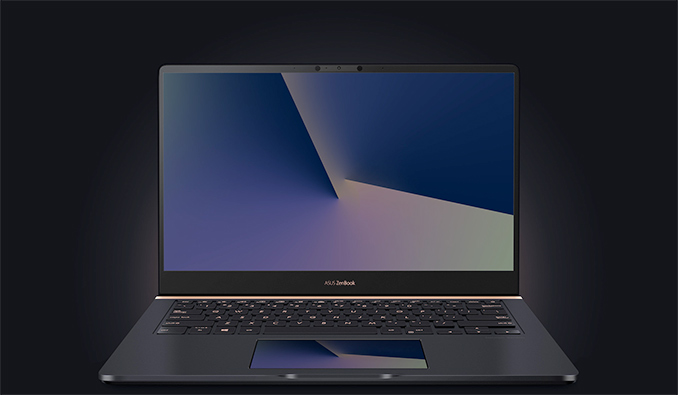
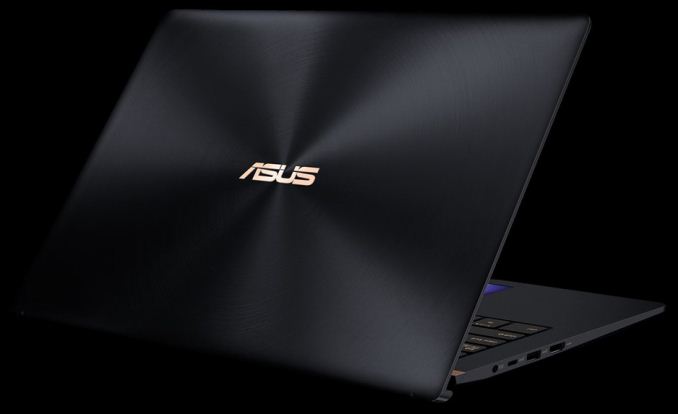
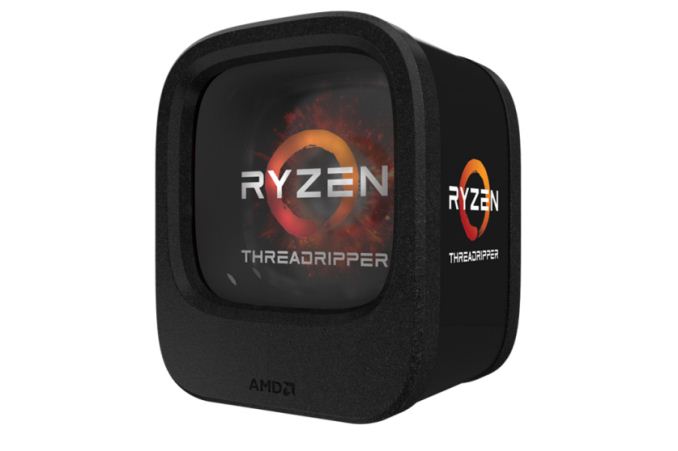
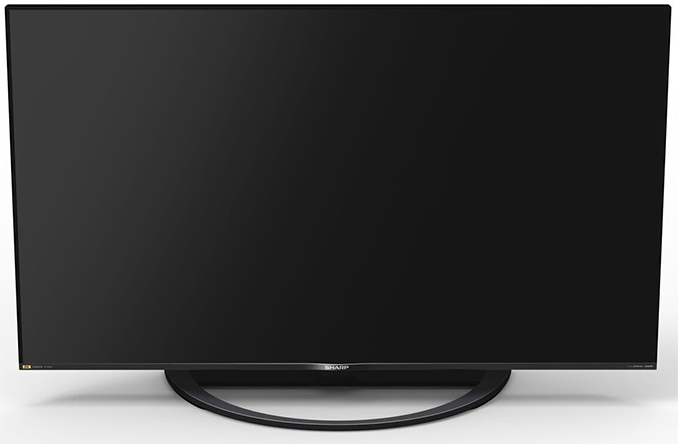
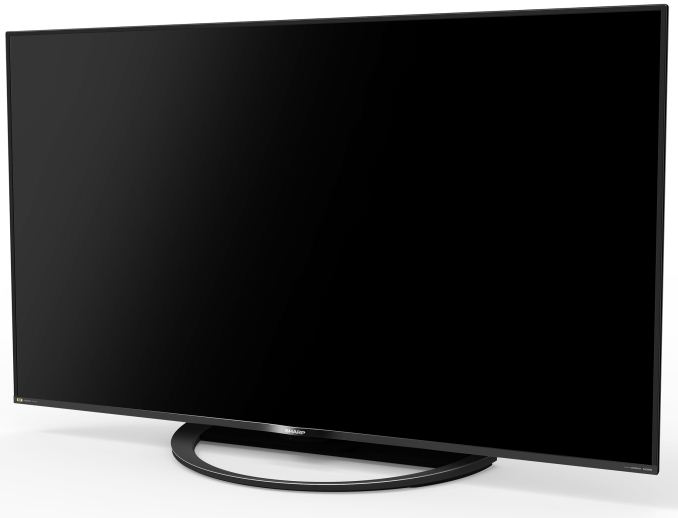
















Bookmarks